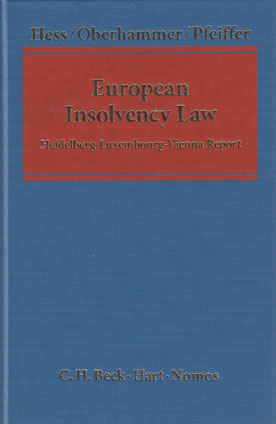
Regulation No 1346/2000 of 29 May 2000 (EIR) is the cornerstone of European insolvency law. The Regulation which is directly applicable in all Member States is the legal basis for cross-border insolvencies within the European Union.
Paving the way for a new European insolvency law, the Heidelberg/Luxembourg/Vienna Report carries out a comprehensive legal and empirical evaluation of European insolvency law practice in the Member States. Based on thorough analyzes the general reporters evaluate the Regulation and provide recommendations for its current revision.